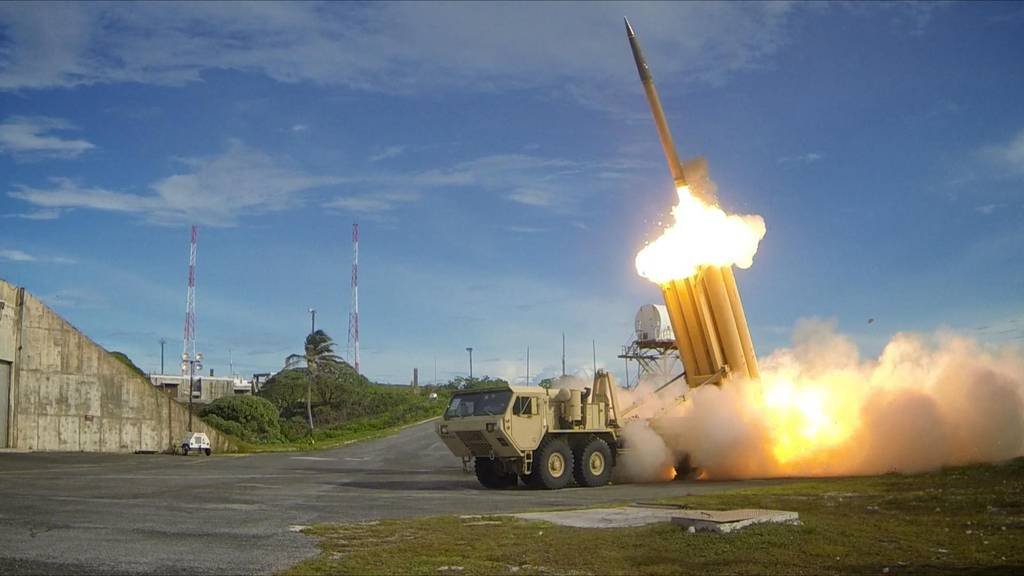
By Ashish Dangwal,
Published by The Eurasian Times, 17 August 2022
On August 16, BAE Systems announced that Lockheed Martin had awarded it a contract to design and produce next-generation infrared seeker technology for the US Terminal High Altitude Area Defense (THAAD) interceptor missile.
THAAD is a crucial component of the US effort to deploy a multi-layered, integrated ballistic missile defense system. The system’s high-altitude intercept capability reduces the impact of enemy weapons before they hit the ground, and its non-explosive kinetic effect minimizes the possibility of detonation.
This air defense system is highly effective for countering ballistic missile threats.
In a press release, the UK-based company, BAE, said that the next generation of infrared seeker technology would offer vital targeting capabilities to shield the United States and its allies from ballistic missiles.
“THAAD is a highly effective system for mitigating high-speed missile threats, and we’re making it more capable,” BAE Systems Precision Guidance and Sensing Solutions Director Greg Procopio said in the release.
The press release continued that the THAAD seeker gives the ballistic missile system, which can intercept missiles inside and outside the atmosphere, crucial sensing and guiding capabilities.
BAE Systems is developing the THAAD seeker at its electronic systems facilities in Endicott, New York; Huntsville, Alabama; and Nashua, New Hampshire.
The seeker uses sensors to lock onto approaching ballistic missiles traveling up to 17,000 miles per hour, allowing the missile guidance system to direct the THAAD interceptor to the threat.
The THAAD Interception
The THAAD missile system is developed to defend against hostile incoming threats like tactical and theater ballistic missiles. The system can operate over a 200-kilometer range and 150-kilometer altitude. It consists of the top layer of a “layered defensive shield” to defend valuable tactical or strategic sites.
These sites might be places like population centers or airports. The system can intercept both exo-atmospheric and endo-atmospheric threats. The THAAD battery typically uses two mobile tactical operations centers (TOCs), nine launch vehicles holding eight missiles, and a ground-based radar (GBR). Each missile in the system is 6.17 meters long.

Each missile has a single-stage, thrust-vectoring solid-fuel rocket motor that weighs about 900 kilograms. A typical THAAD battery has nine M1075 truck-mounted launchers.
The system’s launch vehicle is an Oshkosh Truck Corporation heavy tactical truck with expanded mobility that has been modified. It takes about 30 minutes to reload the launch vehicle.
The ground-based radar (GBR) used for surveillance, threat classification, and threat identification is the Raytheon Systems AN/TPY-2 radar system for the THAAD. This missile interceptor can also be combined with military surveillance satellites like Brilliant Eyes.
The missile defense system recently grabbed attention due to its possible additional deployment in South Korea, which enraged China.
THAAD Sparks Conflict Between China, South Korea
In light of mounting evidence that North Korea is getting ready to conduct a nuclear test, South Korea’s new government recently indicated that it is willing to consider increasing its use of the THAAD missile shield, which the United States deploys.
Defense experts believe that Beijing’s unwillingness to stop Pyongyang’s recent string of missile launches is the reason behind the move, which would overturn the existing policy of not deploying more batteries.
South Korea’s former president Moon Jae-in decided not to deploy any additional THAAD anti-missile systems in 2017 to appease China. In October 2017, the Moon administration put forth the “Three Nos” following an aggressive economic retaliation campaign by Beijing against South Korea.
The policy is defined by three demands: no further THAAD deployment, no participation in a US missile defense system, and no formation of a trilateral military alliance with Washington and Tokyo.
However, the new administration appears to be moving away from this policy. After China demanded that Seoul stop deploying new batteries and restrict the use of existing ones, a senior official in the South Korean presidential office recently told reporters that the THAAD is a tool for self-defense and cannot ever be the subject of negotiations.
When questioned about Seoul’s position on potential future THAAD deployments, the spokesperson responded: “Anything that limits our national security and sovereign right is not subject to negotiations.”
The THAAD system, according to Beijing, could be used to track its missile activities. According to China, Seoul should adhere to “one restriction,” which is restricting the use of current THAAD batteries.
However, it appears South Korea will proceed with their possible course of action to deploy the other THAAD defense systems, plausibly prompting a vehement response from China in the future.
See: Original Article





